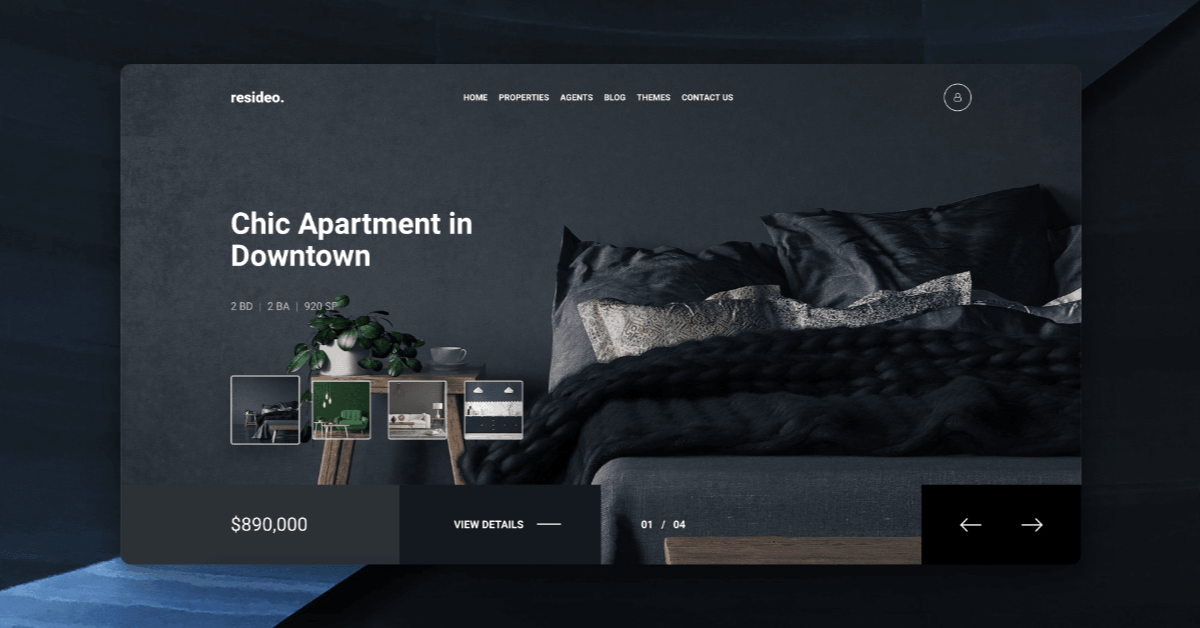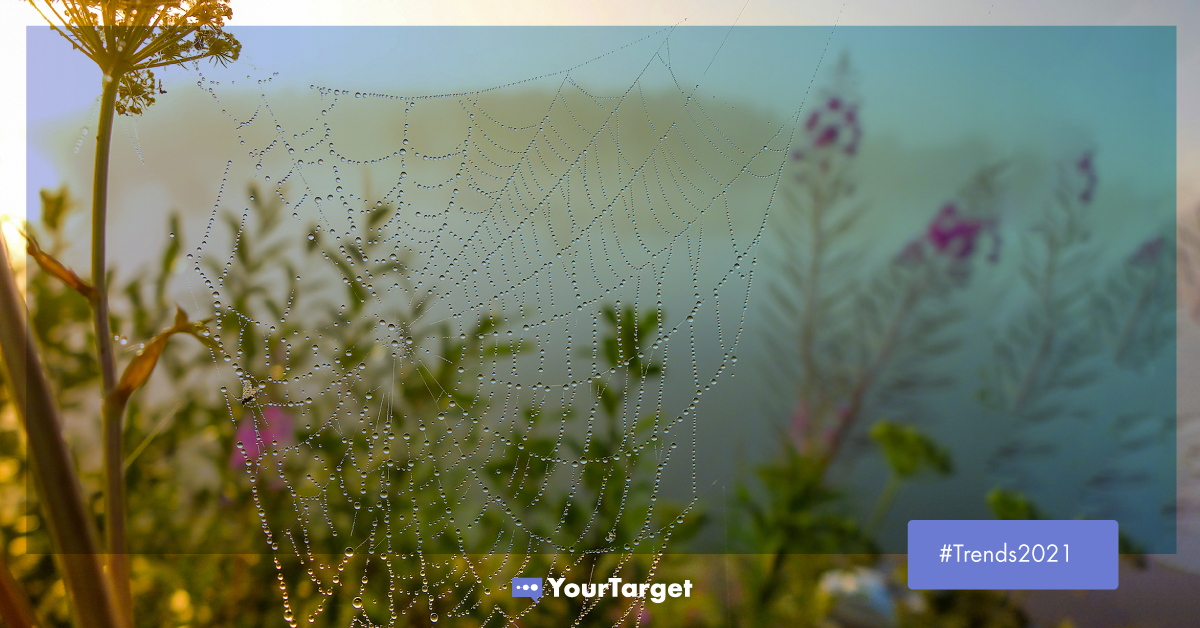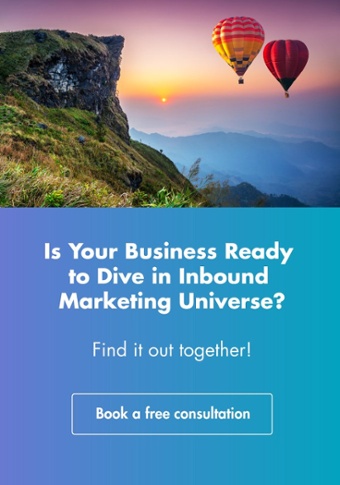In today’s age of digital transformation, the world changes fast. Really fast. Keeping up with these dynamic advancements can be challenging. Website features that were once revelational quickly become outdated and cliche. As a business, keeping up with website trends is crucial to your success and your reputation.
You’ll need to ensure your website responds to shifts in consumer behavior, adapts to technological advancements, and provides an exceptional user experience that boosts engagement and drives conversions.
In today’s article, we’re sharing the most important website trends for 2021. Are you ready to look into the future with us?
Why are website trends important?
In the same way that marketing teams need to stay up to date with digital marketing trends and fashion designers need to know what’s trending each season; business owners need to ensure their website is meeting current digital user expectations to stay on top of their game.
Whether you’re a small start-up or a large business enterprise, a great website is a key to success in today’s digitally-driven world. Without it, visitors are going to have a bad impression of your business from the get-go, which means they’ll be much less likely to convert to customers.
Business Ideas need to use website trends to inform their web design strategies and ensure that design, development, marketing, and any other team involved in the creation of a website are aligned towards the same objectives.
10 website trends to look out for in 2021
A good user experience can make or break your business, by keeping up with website trends stakeholders can ensure they’re relevant and aligned with the customer’s needs.
With that in mind, let’s take a look at some of the most poignant website trends for 2021.
1. Website load time and page speed
One of the most important aspects of a website is its load time and page speed. Whether visitors to your site are browsing on a desktop, tablet, or mobile device; waiting for as little as three seconds after clicking the link can disrupt the user experience (UX), which will have consequences for your business.
79% of online shoppers who have a bad experience on a webpage are unlikely to buy from it again, and 64% would just purchase from another online store. In 2021 and beyond, this trend is going to become more prevalent as technology involves. Organizations must ensure their website experience is smooth and efficient to rank well and convert better.
2. Mobile-first design
Mobile web traffic accounts for 52.6% of global web traffic. With 81% of US adults reporting that they own a smartphone, mobile website optimization is more important than ever. In 2021 mobile-first design is no longer optional.
A mobile-responsive design is one that adjusts to the size of the screen the visitor is viewing it on. Previously, mobile-optimization was an after-thought deployed by web designers to modify layouts to suit mobile screens. Now mobile users make up the majority of web traffic.
Businesses need to respond to this trend with mobile-first designs to enhance UX, generate leads, and boost conversions by improving visitors’ browsing experience.
3. Voice-activated interface
Increased demand and voice search volume is a trend that businesses and web designers will continue to address with voice-activated interfaces.
How we access information is changing. Before, we’d just type our questions and search queries into Google; now we’re increasingly using voice search tools to get quick and convenient answers.
Web design is continually adjusting to keep up with the demand for voice chatbots and virtual assistants that can provide quick and easy solutions without having to use our fingers. In terms of a website’s content, voice search will continue to transform the way organizations implement SEO trends 2021 to take a more conversational approach to keywords and increase ranking.
Sure, most websites aren’t integrating voice search just yet – but it’s a trend we expect will continue to gain traction in 2021.

4. Accessibility
A lack of website accessibility can really impact user experience and have detrimental results for your business. The need to factor in people with disabilities when designing your website goes beyond being a “website trend”, it’s critical to providing an inclusive experience.
Accessibility features aren’t limited to the visual aspect of the website’s design but relate to the compatible assistive technologies that people with disabilities rely on. Voice recognition software is a key player here, and it’s imperative that website designs are usable for people with learning and cognitive disabilities.
A great website shouldn’t exclude anyone from using it.
5. Dark mode
Dark mode has been around for a while now. As people spend longer and longer staring at screens each day, this trend is one that’s here to stay. Dark mode helps to reduce eye strain, which is an increasing concern as people spend more time looking at screens. It’s also aesthetically appealing and provides a modern look that can highlight other design features with stark contrast.
6. Leveraging data for more personalized content
With 89% of digital businesses investing in personalization tactics, it’s no secret that personalized content performs better. By creating custom content that’s informed by buyer personas and targeted towards a specific audience is much more likely to attract, engage, and delight your customers as they move through the inbound marketing funnel.
We all know that websites track our data. Attainable information (e.g. location, search queries, seen ads, website visits, purchase history, etc.) is used to inform the content that is shared, and, in the case of e-commerce sites, the products we see.

In 2021 we’ll likely see more marketing and development teams leveraging customer data to produce increasingly personalized websites and social media content to enhance customer experience and increase conversions.
Nowadays personalized content is expected by users, which is why it’s a defining feature of a successful web presence.
7. Micro-interactions
It’s the little things that count.
When it comes to web design, every small detail has a big role to play in enhancing the overall user experience. Microinteractions refer to the small details on your site that provide user feedback about the actions taking place on the page. They’re often overlooked, as they’re things people just expect to be there.
Some examples of micro-interactions include:
- Font color changes on clickable links
- Link page previews
- Liking a social media post
All of these small interactions add up to an overall experience, which is why improved and more creative micro-interactions are guaranteed to be one of the key website trends in 2021.
8. Progressive lead nurturing forms
Lead generation forms are usually found on landing pages, and they’re integral to any marketing website. These forms are put in place to let businesses get to know their visitors in exchange for valuable information (downloadable content or online courses, for instance).
Non-progressive lead forms are those which ask for too much information.
Progressive ones differ in that they display fields that are relevant to a lead’s journey. If you already have some information about them, there’s no point in asking what their first name is again, is there? Instead, information is stored by a CRM like Hubspot so that it can be recognized the next time they visit your website.
The result? Increased conversions and less frustrated customers. No one wants to fill out the same form over and over again!
9. Virtual reality
Virtual reality (VR) is steadily gaining traction in the digital world. When applied to websites, it can be a powerful tool to enhance user experience and drive conversions through precision and interactiveness.
Some websites like Airbnb are already taking advantage of VR by enabling people to view properties before making a booking. Furniture companies can show us how great that new table will look in our dining room. The possibilities for VR are virtually endless, which is what makes it such a powerful tool for motivating people to make purchase decisions.
10. Chatbots
Day by day, chatbots are becoming smarter and smarter. In the digital age, businesses need to leverage the power of artificial intelligence and machine learning to increase website relevance and improve customer experience.
Although they’re already being utilized by companies worldwide to streamline customer service operations, chatbots will only become more relevant in 2021 and beyond as technology advances.
We predict that chatbots will continue to provide website visitors with crucial information as they supplement human interactions, but with increasing intelligence and capabilities.
What does the future hold?
When it comes to website trends, we can tell you that the future holds plenty of surprises.
With technology advancing at such a rapid pace in such unpredictable ways, it’s crucial that business owners stay on top of the latest trends and use them to inform their own designs and marketing strategies.
2021 is guaranteed to be an exciting year in tech, and we’re sure there’ll be plenty of developments and innovations to keep web designers, marketers, and development teams on their toes. So, what do you think the future holds?
Want to know more about how website trends can inform your inbound marketing strategy in 2021?
Get in touch and book a free consultation!

